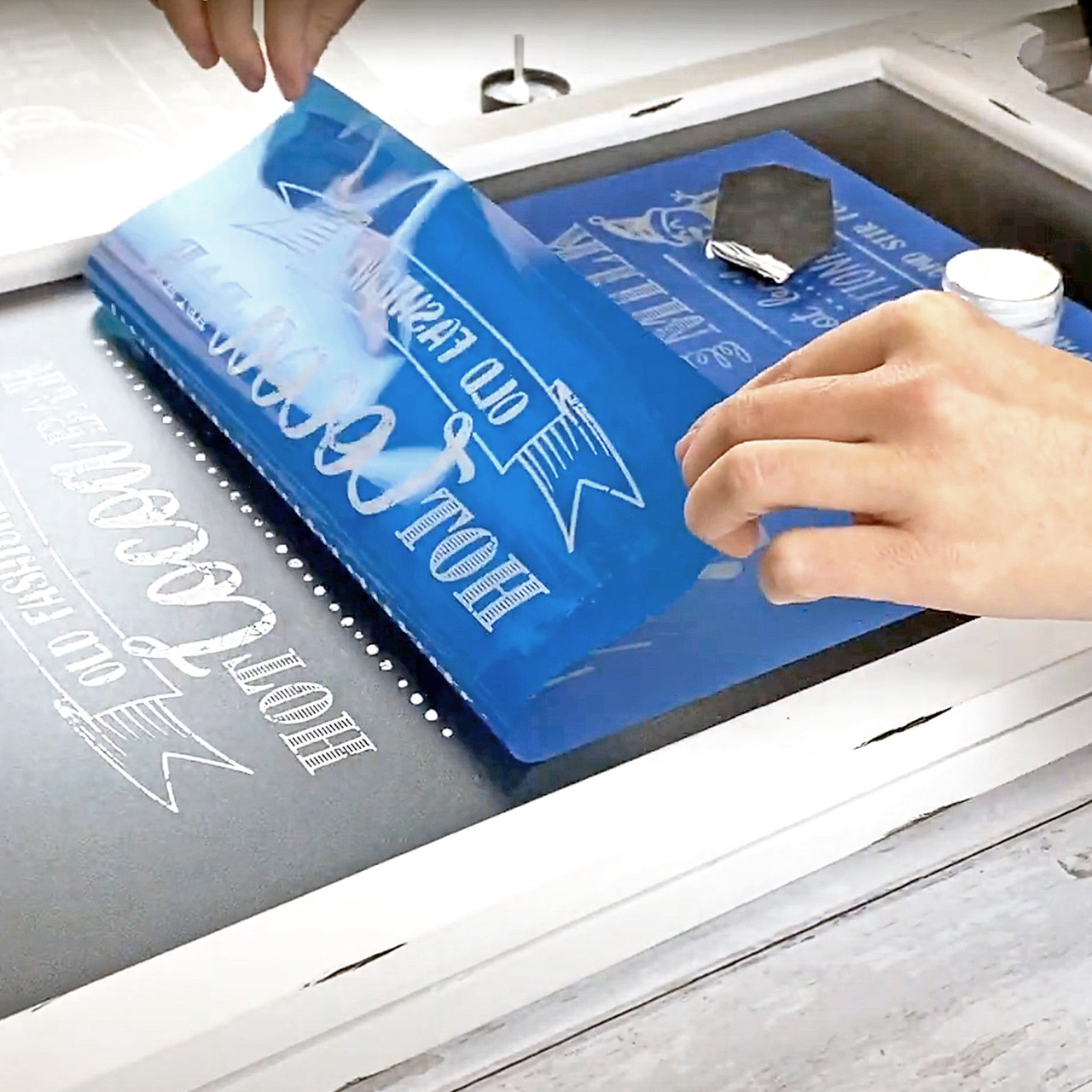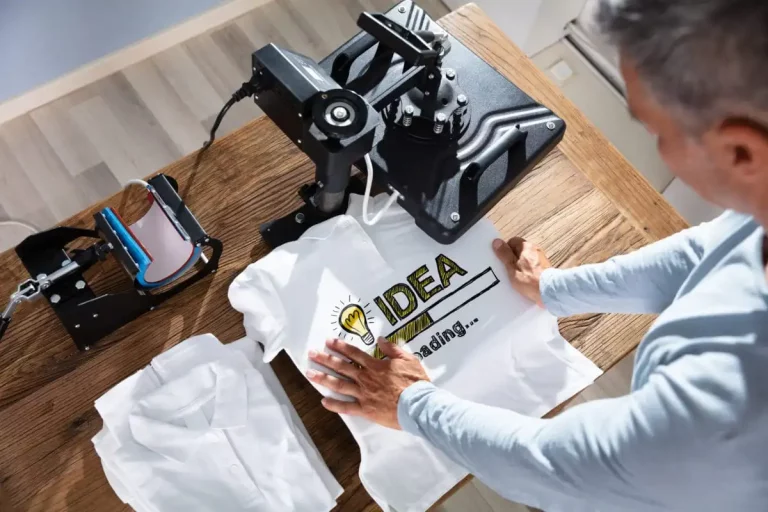Detailed Silk Screen Printing for Custom Art Apparel
Display Printing Uncovered: Every Little Thing You Need to Learn About T-Shirt and Garment Printing Strategies
Screen printing is a fascinating technique that combines art with method, providing endless possibilities for creative thinking. Prepared to check out the essential components that make display printing an art form?
The Fundamentals of Display Printing: Exactly How It Functions
When you dive into display printing, you'll uncover it's both an art and a scientific research. At its core, screen printing includes developing a stencil, or screen, that allows ink to pass through just in specific locations.
Following, you'll blend your inks and prepare your printing surface area. Placement the display over the material, then use a squeegee to push ink via the display onto the garment. This procedure calls for accuracy, as you want clear, vibrant prints. After printing, you'll treat the ink with warmth, ensuring it follows the textile and lasts with laundries. Each action is important, and mastering them will elevate your display printing abilities, transforming basic garments right into distinct, expressive items.
Kinds Of Display Printing Techniques
Once you comprehend the fundamentals of display printing, it's time to explore the numerous techniques that can boost your layouts. One preferred approach is standard display printing, where ink is pressed through a stenciled screen. This technique is fantastic for vibrant, lively colors. There's water-based ink printing, which offers a softer feeling and is eco-friendly, yet it requires a various method to curing.
One more choice is plastisol printing, known for its longevity and vibrant shades, making it a favorite for lots of brand names. Experiment with halftone printing to develop slope results and intricate layouts.
Vital Devices for Screen Printing
To accomplish sensational outcomes in screen printing, having the right devices is fundamental. You'll require a strong display printing structure, which holds the mesh that transfers your style onto the garment. Next, spend in top quality squeegees; these are crucial for using ink evenly across the screen.
Choosing the Right Inks and Products
When choosing inks and products for screen printing, you need to take into consideration the kind of ink that functions best for your task. Consider material compatibility to assure your layouts look excellent and last lengthy. Also, discover environmentally friendly ink choices to make your printing process much more lasting.
Kinds of Display Inks
Choosing the ideal screen ink is necessary for achieving dynamic, sturdy prints that satisfy your task's needs. There are a number of sorts of screen inks to examine. Plastisol ink is popular for its flexibility and ease of use, giving outstanding shade opacity on dark fabrics. Water-based ink, on the other hand, offers a softer feeling and is eco-friendly, making it excellent for those seeking to minimize their ecological impact. Discharge inks get rid of color from the fabric, resulting in a soft, vintage appearance however need details handling. Finally, specialized inks, such as metal or glow-in-the-dark, can include distinct effects to your layouts. Assess your project requirements and pick the ink that lines up best with your desired outcome.

Material Compatibility Considerations
Recognizing textile compatibility is important for attaining high-grade display prints, specifically given that different products react distinctively to different inks. When choosing inks, take into consideration the material type-- cotton, polyester, or blends. For cotton, water-based inks function well, supplying gentleness and breathability. Polyester, on the other hand, often requires plastisol inks for better bond and vivid colors. If you're publishing on blends, you may require to make use of a mix of both types. Constantly test your inks on example fabric to guarantee they stick correctly and maintain color integrity. In addition, maintain in mind that fabric weight and texture can affect the last result, so choosing the best ink and product combo is essential for your task's success.
Eco-Friendly Ink Options
Environmentally friendly inks are becoming a preferred selection for display printers who want to decrease their ecological influence while maintaining high quality. When picking inks, think about water-based inks, which are much less hazardous and less complicated to clean up compared to typical solvents.
Additionally, look for inks made from renewable energies, such as soy or vegetable-based choices. By choosing the right inks and materials, you'll not just create spectacular styles yet additionally add to an extra sustainable printing procedure. Make the button, and your prints will show your more dedication to the setting!
Preparing Your Style for Screen Printing

File Layout Demands
To ensure your design looks sharp and vivid on material, you'll need to pay attention to file layout demands for screen printing. Start with vector data like AI or EPS, as they can be scaled without shedding top quality. If you use raster pictures, choose high-resolution documents, such as TIFF or PNG, preferably at 300 DPI. Stay clear of utilizing JPEGs, as they can shed quality when resized. Additionally, ensure your layout has a clear history to stop undesirable white sides on your prints. Finally, keep shade settings in mind; CMYK is standard for display printing, so transform your RGB develops appropriately. By complying with these guidelines, you'll set your artwork up for a successful print.
Shade Separation Strategies
Shade separation is a crucial action in preparing your style for screen printing, and mastering it can substantially improve your print high quality. You'll require to break your style into private shades, as each color calls for a different display during printing. Beginning by identifying all the shades in your layout and develop layers for each one. You can utilize software application like Adobe Photoshop or Illustrator to separate and separate shades efficiently. Be certain to save each layer as a separate documents, normally in a format like TIFF or PSD. This precision not only ensures accurate color depiction however likewise streamlines the printing procedure. By paying interest to color separation, you'll achieve vibrant and specialist results in your screen-printed garments.
Resolution and Size
Attaining the most effective cause screen printing starts with guaranteeing your layout has the appropriate resolution and dimension. Ideally, your artwork should go to least 300 DPI (dots per inch) for sharp, clear prints. If you make use of reduced resolution, your last item might look less than professional and pixelated.
When it pertains to size, take into consideration the measurements of your print area. Design your art work to match the last print dimension, preferably developing it in the real measurements you'll be publishing. In this manner, you'll stay clear of any type of unforeseen scaling problems.
Always examine your style in both vector and raster layouts. Vector graphics can be scaled without losing quality, making them suitable for display printing. Preparing properly will guarantee your layout looks incredible on every garment!
Step-by-Step Screen Printing Refine
Screen printing is a dynamic procedure that allows you to produce vibrant styles on various surface areas. To begin, you'll require a screen, solution, and your picked ink. Initially, prepare your screen by cleaning it completely. Next off, use the emulsion equally and allow it completely dry in a dark area. As soon as dry, subject your screen to light with your style put on it, which will certainly harden the emulsion where the light hits, developing a pattern - screen printing kit.
Put ink onto the screen and use a squeegee to push the ink with the pattern onto the material. Raise the screen very carefully and let the print dry. You've effectively screen published your style.
Tips for Successful Display Printing Projects
While you're diving into your screen printing tasks, keep in mind that prep work is essential to success. Beginning by collecting all your products-- inks, garments, screens, and squeegees. A clean work space aids prevent undesirable errors, so clean before you start.
Following, confirm your art work is high-resolution and correctly sized for your garment. Evaluate your screen for appropriate exposure and clean click for source it completely to stay clear of spots. When mixing your inks, comply with the manufacturer's guidelines to attain the right uniformity.
During printing, use even stress with your squeegee for regular outcomes. Do not rush; take your time to validate each print satisfies your criteria. After printing, let your garments dry entirely prior to managing or packaging them.
Lastly, constantly keep a sample of your benefit future helpful resources referral. In this manner, you can assess your development and enhance your strategies in time. Pleased printing!

Regularly Asked Inquiries
How much time Does It Take to Establish a Screen Printing Task?
Setting up a screen printing work typically takes about 30 mins to an hour. You'll prepare the displays, mix inks, and adjust the press. The moment differs based on intricacy and experience, so remain organized!
Can I Publish on Various Textile Enters Utilizing the Very Same Technique?
Yes, you can print on different textile kinds using the very same strategy, yet you'll need to readjust your settings and inks. Some fabrics soak up ink in a different way, so exploring guarantees the most effective outcomes for each and every product.
What Are Common Mistakes to Stay Clear Of in Screen Printing?
When display printing, avoid common blunders like making use of the wrong ink, overlooking proper direct exposure times, or skipping pre-press checks. Constantly evaluate your configuration and keep tidy displays to assure quality outcomes each time.
How Can I Properly Tidy and Maintain My Display Printing Devices?
To effectively tidy and keep your display printing devices, you need to on a regular basis clean screens with proper solvents, check mops for wear, and guarantee all devices are kept dust-free and completely dry. Consistency enhances and stops expensive repair work performance.
Is Screen Printing Ecologically Friendly Compared to Various Other Techniques?
Screen printing can be more environmentally pleasant than various other approaches, particularly if you make use of water-based inks and eco-conscious products. By picking sustainable supplies and techniques, you lower waste and lessen your effect on the earth.
Display Printing Uncovered: Whatever You Required to Know Regarding Tee Shirt and Garment Printing Strategies
At its core, display printing involves producing a stencil, or screen, that permits ink to pass with only in details locations. Placement the screen over the textile, then utilize a squeegee to push ink with the screen onto the garment. One prominent method is standard display printing, where ink is pushed via a stenciled display.When picking inks and products for screen printing, you need to take right into account the kind of ink that works ideal for your project.